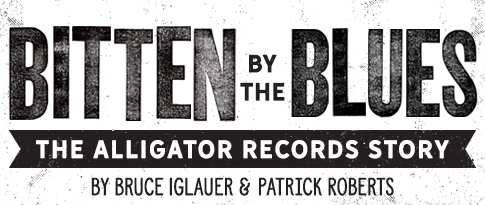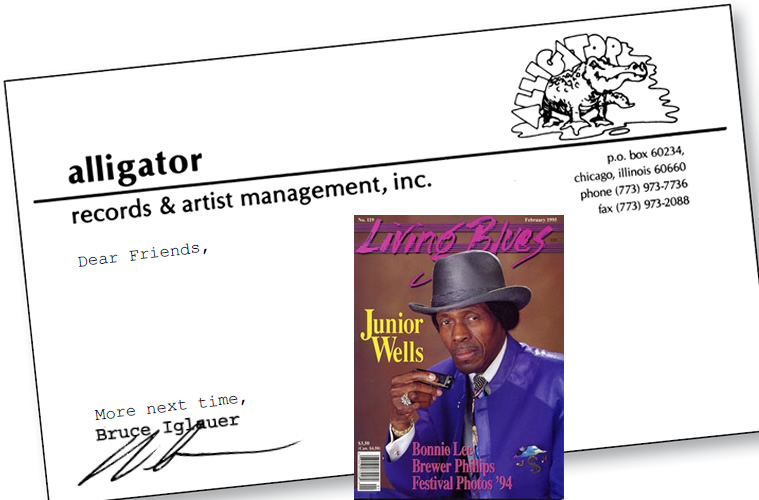Dear Friends,
I always seem to write these on the fly…in this case, having just flown back from Brazil after a four-show Koko Taylor tour and before flying to San Francisco to help mix the next Little Charlie and the Nightcats album and then on to North Carolina to cut Steady Rollin’ Bob Margolin. Plus, the week before I left for South America, I was in Memphis producing the Alligator debut of C.J. Chenier and the Red Hot Louisiana Band. It’s our first zydeco album; and C.J.and I really made the record we wanted to make…one that works whether you’re dancing up a sweat or just relaxing in front of the stereo. Most zydeco records frustrate me because the songs never seem to hold up as well as the energy does; with C.J. I think we’ve managed both.
Meanwhile, the finishing touches are being put on our first Floyd Dixon album in L.A., and I’m getting ready to record Billy Boy Arnold next month. 1995 should be a good year for the blues fans, if we have anything to say about it!
I promised last time to tell you more about the recording of Koko’s “From The Heart Of A Woman” and about Criss Johnson, the extraordinary young guitarist whom she brought into the studio. With each successive Koko album, she and I have tried to “stretch” her a little bit further, covering not only the raw, hard blues that made her reputation during her Chess years, but also venturing into R&B (not too smooth, though!), rock ‘n1 roll and soul ballads. The “stretch” song on “Heart” was “I’d Rather Go Blind,” the classic ballad that has become one of the high points of her live show. I was a little afraid of it, because Etta James had originally done it so masterfully, but Koko made it her own, bringing a rawer, more “down home” energy than Etta had put into the song. Much of the inspiration came from the subtle, infinitely bluesy guitar fills that Criss laid under Koko’s voice.
Koko had brought Criss to rehearsal, raving about his abilities. I was nervous; if he was such a great player, why wasn’t he on the blues scene?
She introduced me to a soft spoken, young, longhaired guy, seemingly a bit shy.• He and Koko were cousins, but Criss’ background was in the church, not in the blues bars. He had begun recording as a teenager, with “Criss and the Righteous Group,” and when we met he was touring as lead guitarist for Shirley Caesar and the Caravans. In fact, although he had spent a stint as Otis Clay’s guitarist, Criss was very reluctant to play non-religious music at all; and only joined Koko’s project because of hisdeep affection for her. But from the start he emerged as the natural session leader, suggesting rhythms, fills, and chord changes, shaping the arrangements around the grooves that Koko sang to him. By the time the album was done, I had to give him credit as a co-producer; he had earned it. Criss plays left-handed upside down, often using a volume pedal, and he tunes a half step down from regular guitar tuning, allowing him super-wide string bending. He doesn’t have a wide blues vocabulary; Albert King is the only blues guitarist he’s studied. Instead, Criss follows his own muse, pulling achingly beautiful and screamingly passionate licks and fills from his guitar. Although he’s consistently declined to join Koko on stage (it’s not the church, after all), his playing has become more and more a part of her albums, and with each one he’s played on—”Queen Of The Blues,” “Jump For Joy” and last year’s “Force Of Nature,” he’s proven a true blues innovator. I hear people imitate his licks all the time, but rarely do they do it right.
Bruce Iglauer

